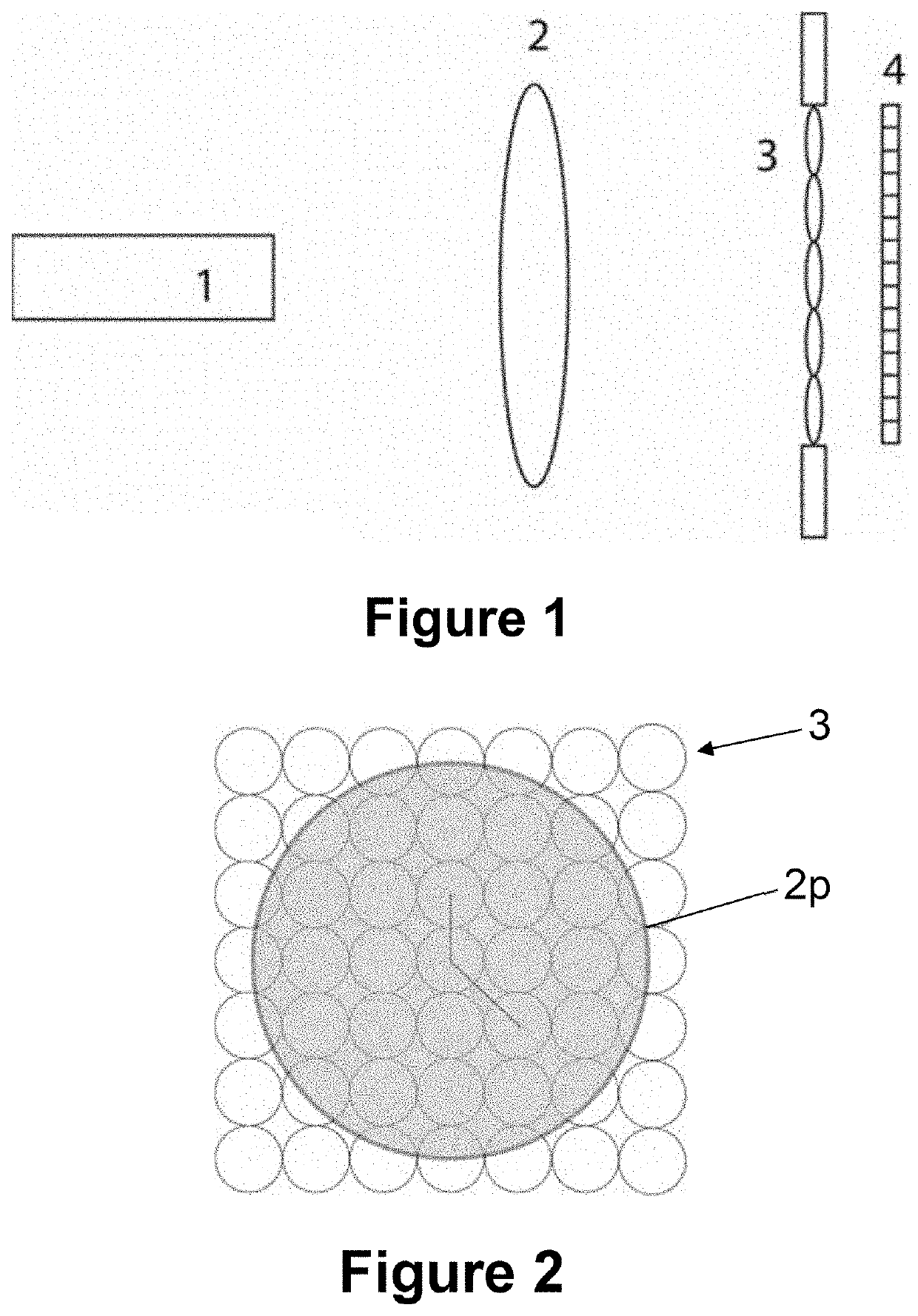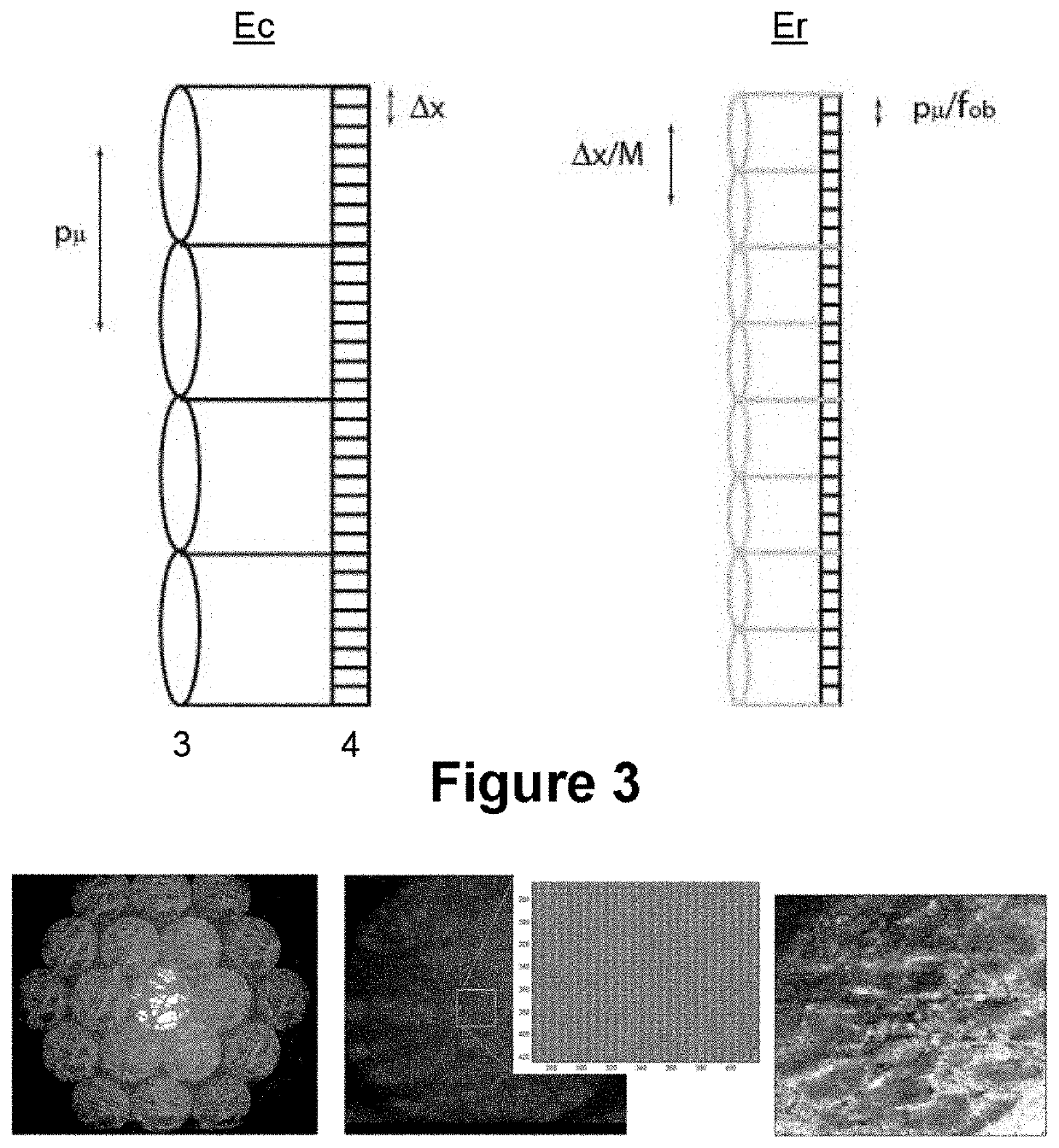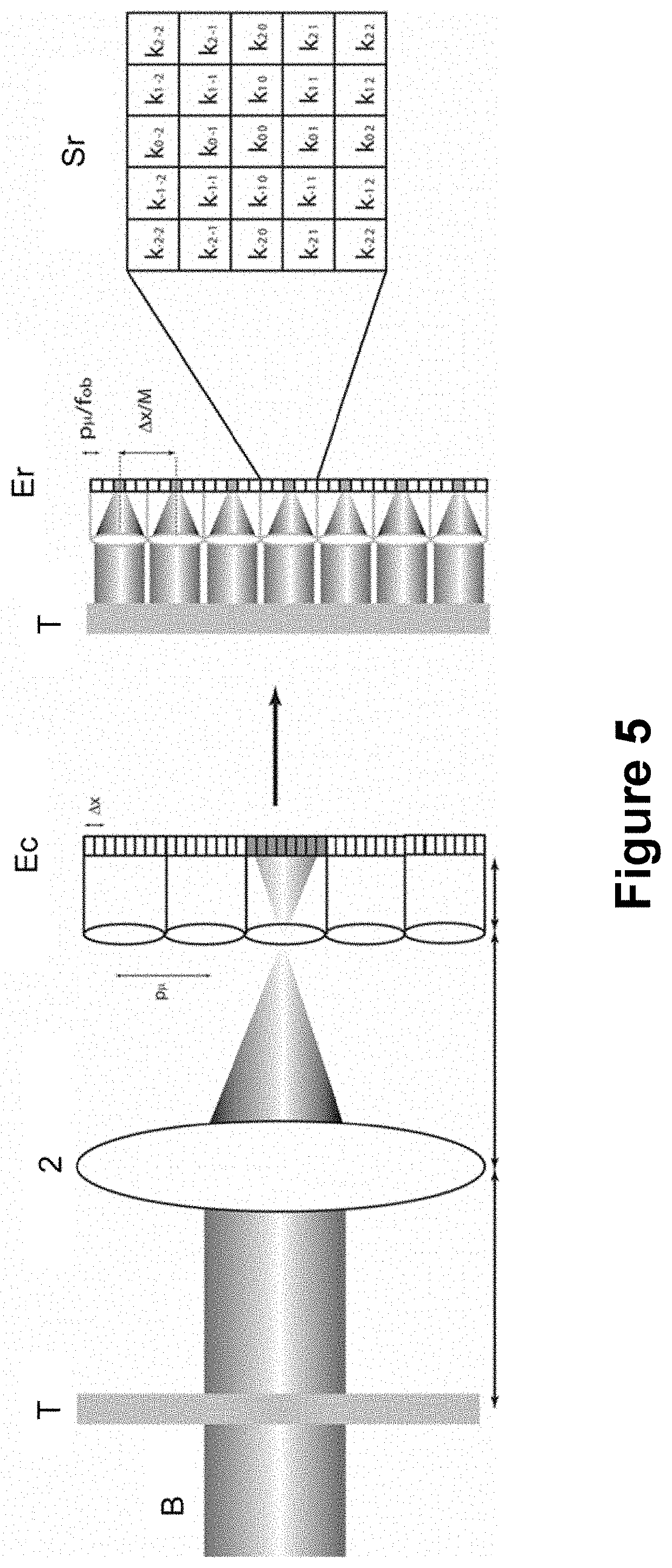Microscope for quantitative wavefront measurements, microscope module and kit, method and computer program for computational wavefront reconstruction
a microscope and wavefront technology, applied in the field of microscopes for quantitative wavefront measurements, can solve the problems of limited resolution, low stability of monocular information, and process, and achieve the effect of improving the spatial resolution
- Summary
- Abstract
- Description
- Claims
- Application Information
AI Technical Summary
Benefits of technology
Problems solved by technology
Method used
Image
Examples
Embodiment Construction
[0069]As illustrated schematically in FIG. 1, for its most basic embodiment the microscope proposed by the first aspect of the present invention comprises:[0070]illumination means comprising a partially or totally coherent light source 1, to illuminate a sample T (illustrated schematically in FIG. 5);[0071]a microscope objective lens 2 configured and arranged to receive and focus the light scattered by the sample T when illuminated by said illumination means 1;[0072]an ordered two-dimensional arrangement of lenses 3 located at the aperture diaphragm of said microscope objective lens 2 or at the location of an intermediate image thereof;[0073]an image sensor 4, or pixelated sensor, formed by a plurality of photodetector elements or pixels, located at a capture space on the focal plane of the ordered two-dimensional arrangement of lenses or lens matrix 3, to receive the light scattered by the sample T subsequent to crossing the microscope objective lens 2 and the ordered two-dimension...
PUM
 Login to View More
Login to View More Abstract
Description
Claims
Application Information
 Login to View More
Login to View More - R&D
- Intellectual Property
- Life Sciences
- Materials
- Tech Scout
- Unparalleled Data Quality
- Higher Quality Content
- 60% Fewer Hallucinations
Browse by: Latest US Patents, China's latest patents, Technical Efficacy Thesaurus, Application Domain, Technology Topic, Popular Technical Reports.
© 2025 PatSnap. All rights reserved.Legal|Privacy policy|Modern Slavery Act Transparency Statement|Sitemap|About US| Contact US: help@patsnap.com



